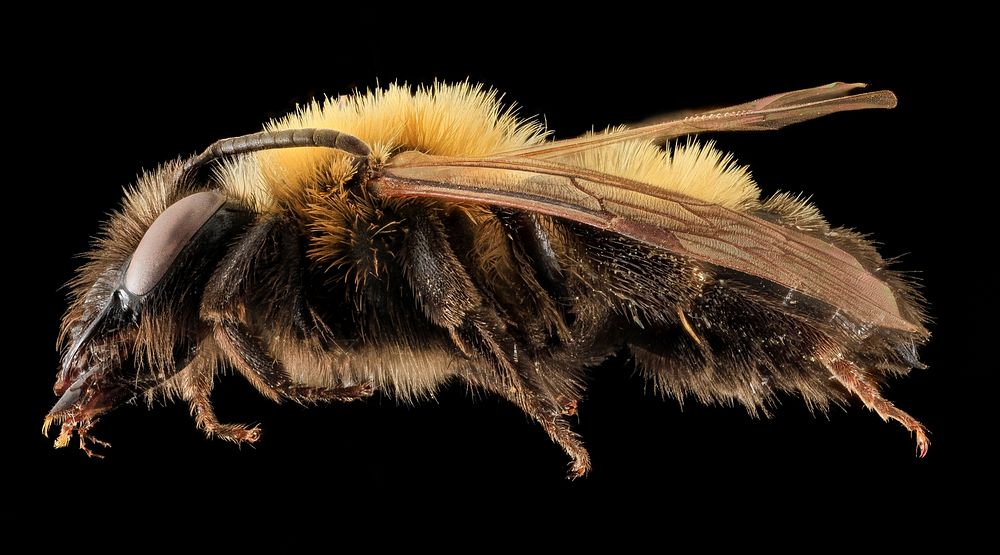https://www.usa.gov/copyrighted-government-workshttps://www.rawpixel.com/image/4038287

Andrena milwaukeensis, F, Side, Hancock co., Brooklin_2014-01-06-14.48.32 ZS PMax
Andrena milwaukeensis, the Milwaukee Andrena, is named for its place of discovery in Milwaukee, Wisconsin (1). They range throughout most of the US, especially northern states and well into Canada, but are absent in southern central states (2). A beautiful bee, they are known for their very fuzzy “fox-colored” orange hairs covering the thorax and some of the abdomen (though in some specimens the hairs are yellow) (1, 2). Milwaukee Andrena are some of the earliest bees to emerge in the spring and remain active through early summer (2, 3). They live in woodland habitats and are generalists, visiting many types of flowers including Viburnum, Vaccinium, and early flowering fruit trees in the Rosaceae (rose) family (1, 2). They are solitary ground nesters in open sandy soils and often aggregate nest sites so closely that they appear as a colony (3).
Original public domain image from Flickr
Public DomainFree CCO U.S. Government image for Personal and Business use